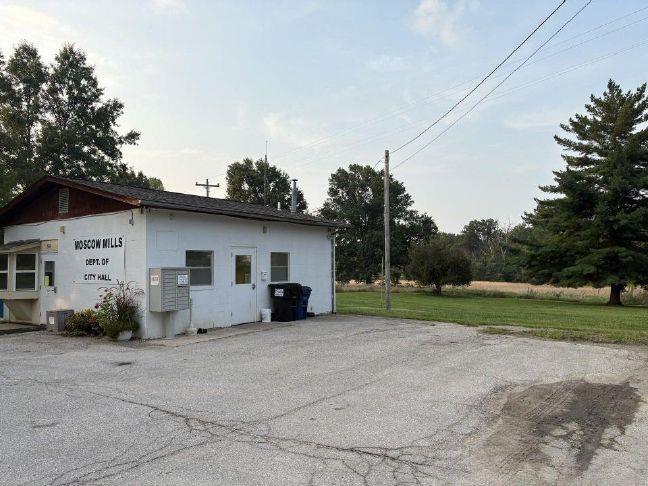Troy Board delays decision on new subdivision
TROY – The impact of proposed and future subdivisions dominated Troy’s Board of Aldermen meeting Monday night.
Monte Cannon of Cannon Builders came before the board hoping to receive a site approval for a new development, Whiskey Creek Subdivision.
The 101-home development would be located on the west side of town, south of the West Hamptons subdivision.
The proximity to that subdivision, and the impact the new one would have on it in terms of stormwater runoff and retention basins, generated concerns with residents.
Ron Walters told the board that he has lived on Huntington Drive for nearly 30 years and has seen flash flooding become more and more of a problem.
“My main concern is over the inadequately sized culverts on Huntington Drive and Highway J, which causes water to back up,” Walters said. “At one time, they were sufficient, but they’re not anymore. I have seen changes take place over the years that warrants my concern over these culverts. And I feel like my concerns are not being taken seriously.”
Walters pointed to the board’s approval of a nearby apartment complex being built at the intersection of Highways 47 and J as evidence of their ambivalence.
“Recently, you approved the 60-unit apartment complex …near this water basin, which will create more stormwater runoff,” he said. “And tonight, you planned to discuss a 101-home development adjacent to our subdivision.”
Walters contends part of the problem is the detention basins aren’t maintained.
“The one there now …not been maintained. I’ve had my property flooded several times with water levels as high as three feet on my basement wall,” he said. “I’m not opposed to new development and growth. What I do oppose is how decisions are sometimes rushed through without intensive research.”
Alderman Dennis Detert is Walters’ neighbor and he said concerns about stormwater runoff motivated him to first run for the board in 2006.
He believes one proposed basin isn’t enough, unless it’s made significantly bigger.
“You know, Monte might be well on track of everything that he’s doing,” Detert said of the current plans. “I don’t know, I’m not an engineer. What I do know is standing up there, watching this thing overflow because there’s so much water coming in it and that’s with it being brush and trees, not with it being concrete asphalt and rooftops.”
Cannon defended the site plan, pointing out it adhered to what the city required.
“We’re used to regulations, and we don’t mind abiding by them, but we now need to know what to abide by,” Cannon said. “We pay a lot of money to the engineers…and (the plans) are designed for whatever your criteria is. Is it fair to us to not allow this when we met your criteria?”
By a 3-2 vote, the board agreed to table a decision on the site plan until an independent engineer can determine whether the current stormwater runoff proposal is adequate.
Aldermen Detert, Terri Huffman and Rachel Dunard voted to table the proposal while Aldermen Quentin Laws and Mitchell Bryant voted against the delay. Harold Horner didn’t attend the meeting.
Coincidentally, in a workshop meeting proceeding the business meeting, the council agreed to solicit proposals to receive as-needed engineering services.
The city previously had a full-time engineer on staff but eliminated the position.
“We did have a city engineer many years ago. Maybe we didn’t need one at the time. Maybe we just felt like we couldn’t afford it,” City Administrator James Knowles said. “I can say many other communities just keep the city engineer on-call. That’s very customary for the purposes of being able to pick up that phone and have that. I don’t think it’s a good idea for the city going forward … not having technical advice on some of these developments that are coming before us.”
While the board will consider those proposals at its meeting next month, they will also consider establishing uniform guidelines for future subdivisions.
Knowles said those provisions would include specifications for streets, materials used in the streets and how construction companies can access properties while under development.
“How many more subdivisions are going to get built with substandard streets, substandard testing, lack of testing, lack of inspections, et cetera,” Knowles asked.
Knowles said some of the requirements can include the type of concrete used in streets, third party inspections, maintaining the streets before dedicating them to the city.
Plus, he said, the cost would be nominal when passed on to the builder.
“It will obviously add to the cost to some subdivisions. But it’s rather a nominal fee to the developer when you’re building a 75-home subdivision and you add $50,000 to, you know, the cost,” he said. “They might add less than $1,000 more for every house, but, you know, that could save the city hundreds of thousands of dollars in the future. And so it’s an extremely important investment for us to require these builders. And I think it’s something we need to do before we approve the next subdivision to be built in our city.”
City staff will draft the new requirements and discuss them with the board at a future meeting.


